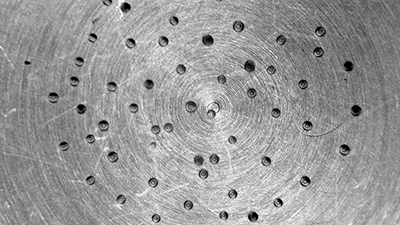
Making it Rain: Researchers assess method for predicting ice nucleation properties
By Alexandra George
Particles control rain. Or, rather, they control if clouds freeze—and it’s these frozen clouds that are the source of most rain. So when we experience downbursts of rain, chances are that it’s coming from frozen clouds.
These particles are called ice nucleating particles: they cause ice crystals to grow extremely fast, much faster than liquid cloud droplets. Because of their quick growth, the ice nucleating particles may steal water from liquid cloud droplets that haven’t frozen yet. But when these particles get too heavy and start sedimenting out of the atmosphere due to gravity, we get something that Pittsburghers know very well: rain.
“We actually have very poor ability of how to predict whether particles will be good ice nuclei or not,” said Ryan Sullivan, assistant professor of chemistry and mechanical engineering. He and his team, including mechanical engineering graduate student Hassan Beydoun and chemistry graduate student Michael Polen, have recently evaluated the common method that researchers use to predict whether or not particles will cause clouds to freeze.
Currently, many researchers suspend particles in water using a pipette to arrange the droplets on a cold plate. As they cool them, they use a microscope to assess when each droplet freezes. They don’t all freeze at the same time, but when a particle freezes it turns black and the researcher is able to map out the temperature freezing spectrum of the droplets.
Sullivan, Beydoun and Polen have called into question the method used to quantitatively describe and predict the ice nucleation properties of any given type of particle—in other words, will a particle serve as a catalyst for causing a cloud to freeze? They discovered that just changing the particle concentration in each droplet can change the ice nucleation ability determined by the droplet freezing assay.
“One of our goals here is trying to improve our ability to predict, or at least to describe, when particles will make clouds freeze,” said Sullivan. “What we have proposed is fundamentally a pretty simple explanation for why so many different research labs around the world keep getting different answers when they measure the freezing properties of the same particles.”
Because pure water doesn’t actually freeze at zero degrees Celsius, there’s a range in temperature space—from zero to -40 degrees Celsius—where researchers need to measure the temperature freezing curve. Researchers will dilute the particle concentration in the droplet or increase concentration by putting more or less particles into the water. When the solution is more dilute, then the freezing curve shifts to colder temperatures and when it is more concentrated, the curve shifts to warmer temperatures.
The researchers then normalize the curve to the average particle mass or particle surface area in each droplet and convert these averages to what’s called an “ice active site” density. Until now, researchers thought that normalizing to the particle mass or particle surface area would correct for the way concentration shifts the freezing temperature. But what Beydoun and Sullivan discovered is that particle freezing properties don’t just scale with particle mass or particle surface area.
“We think this simple but important effect of particle concentration in the droplets is a likely explanation for the longstanding disagreement between various research groups around the world that all measure the ice nucleation properties using their various techniques and get different answers for the same particle system,” said Sullivan.
The article, “Effect of particle surface area on ice active site densities retrieved from droplet freezing spectra,” was published in Atmospheric Chemistry and Physics.
Originally published: https://www.cmu.edu/mcs/news-events/2017/0309-ice-nucleation-properties.html